Allen Tiller's Blog, page 4
December 3, 2024
REMAINS OF A DIPROTODON FOUND.
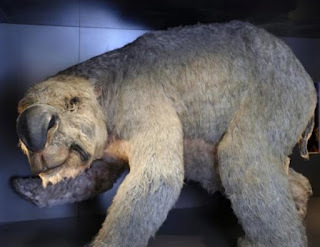
In 1924, The Mail (newspaper) reported that Professor WalterHowchin unearthed the bones of a Diprotodon at Gawler. It also reported thatother bones had been found in the bed of the River Torrens, and at LakeCallabonna in the States far north.
In 1936, describing Gawler’sriver system, the Bunyip newspaper referred to a Kaurna people allegory of theMoole Yerke Perre, a large ‘weird antediluvian monster (that) was responsiblefor the permanent marks made by its nose and shins,’ in the riverbeds andbanks. The Bunyip reporter then links this creature to the 1891 discovery of Diprotodonfossils in Gawler.
The Bunyip reported on the original 1891 find of bones,
Scientific Discovery at Gawler South.
REMAINS OF A DIPROTODON FOUND.
A discovery of more than ordinary interest was made at Gawler Southa few days ago by some workmen who were excavating a tank on the property ofMr. Thomas Molan. When they had sunkabout 8 ft. they came upon a deposit of bones. At first, they took very littlenotice, and as they were very crumbly shovelled them out with the clay.
After a time the size of some of the bonesattracted their curiosity, and one of the members of the Gawler GeologicalClass having been communicated with it was thought to be the remains of theextinct Australian marsupial, the diprotodon.
Mr. W. Howchin, F.G.S., the lecturer of the Gawler Geologicaland Mineralogical Class was informed, and came up on Wednesday afternoon. He atonce confirmed the opinion. Bones continued to show themselves right across thetank and to a depth of 11 ft. At the latter depth a portion of the head wasunearthed, and as it was desired to get it out as perfectly as possible it wasdecided to obtain the services of Mr. A. Zielz, of the Adelaide Museum.
That gentleman came up yesterday morning, and completedthe exhumation, although he had to be content to get the head out in pieces. The diprotodon issaid to have lived in the post-Pliocene age — before the age of man and wasabout the size of an elephant. Its head was about 3 ft. in length. Very few remainsof the species have been discovered, and the best skeleton is said to be in possessionof the Adelaide Museum it having been obtained from the Burra district recently.No complete skeleton, however, has yet been found. It is impossible to tell yethow complete the present skeleton is as the bones are so broken, but Mr. Zietzdoes not think it will be as perfect as that obtained from the Burra.
All the bones were carefully packed in caseswith sawdust preparatory to being sent to the Adelaide Museum forreconstruction. Just as they were about to be taken away the owner of the propertyappeared on the scene and declined to allow them to go to Adelaide unless he waspaid £10. As Mr. Zietz could not promise that amount without consulting his Committee,the cases were placed in the hands of Mr. E. Potter, the Chairman of the Gawler GeologicalClass, until a decision is arrived at.
A large number of persons visited thescene of the discovery yesterday. Mr. W. H. Percy, who was working on the property,rendered valuable assistance in getting the remains out, and the contractor, Mr.James Peek offered every facility.
Perhaps, when recollecting in a 1952 issue of TheAdvertiser Ernest L.B. Potter of Croydon, he remembered wrongly that his uncleEdward Potter had discovered the Diprotodon, instead of Professor Howchin. Inan Out Among the People column, it was reported,
ERNEST L. B. Potter (West Croydon) tells me that as a boy of10, about 1890, he remembers a diprotodon skull being found in an excavationfor an underground tank at Gawler South, near Dead Man's Pass on the South Paraand the road to One Tree Hill. His uncle, Edward Potter, a geologist,pronounced it to be a diprotodon.
The skull and bones found in Gawler were identified as thoseof a Diprotodon from the Pleistocene Epoch of Australia. Diprotodon Optatum became extinct about 25,000 years ago and was known to exist while indigenous populations were in thearea. These animals grew up to 3.8 meters long from head to tail and stoodabout 1.7 meters tall at the shoulder. Its closest relations today arethe wombat and the koala.
For more information on the Diprotodon, please visit here: Diprotodon: Not a wombat
Researched and written by Allen Tiller © 2024.
'Prehistoric Times In South Australia', The Mail, (1 March 1924),p. 1.
'Early Gawler And District Nomenclature.', Bunyip, (11 December1936), p. 8.
'Scientific Discovery at Gawler South.', Bunyip, (24 July 1891), p.2.
'OutAmong The People', The Advertiser, (2 September 1952), p. 4.
November 5, 2024
A Haunting at Belalie North, South Australia.
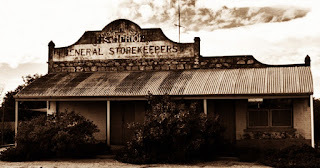
Belalie North is famous as the birthplace of R.M. Williams.It was a town that sprang up when the train line from Peterborough (then Petersburg) to Jamestown was built. It was at the time, the highest trainstation above sea level in South Australia, which made it hard for steamengines to climb the steep hills. The line was eventually re-routed aroundBelalie, and the town went into decline.
All that stands today is the ruins of the former general storeand the entrance pillars to the town which contain a memorial to local menlost in World War One.
It has long been rumoured that Belalie is haunted. Legendtells of two brothers who fell in love with the same woman. During a heatedargument, it is alleged one brother shot and killed the other. Once a year, onthe day of the murder, the ghost of the brother, it is said, can be seenstanding where he was killed. In a rage, he stands on the road and shouts, ‘I’llkill you, you bastard!!”
Researched and written by Allen Tiller ©2024
‘BelalieNorth,’ Australia For Everyone, (2017), https://www.australiaforeveryone.com....
October 29, 2024
The Ghosts of Stanley Grammar School – Part 3: Peppi the ghost
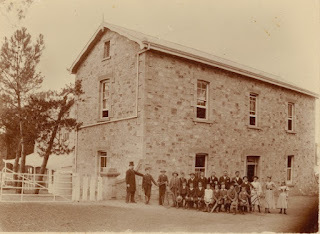
Stanley GrammarSchool 1897 [SLSA: B 16781]
There are always local legends about buildings that become derelictin small country towns, the former Stanley Grammar School is no exception. Itis claimed that the stairway that allowed boys access to the male dormitory onthe first floor, was narrow and very steep.
Legend states that one small boy either fell or was pushed down the staircase,dying from his injuries (there is no record I can find for this). It is allegedthis boy, dubbed ‘Peppi’ haunts the old school.
There have been claims by witnesses to Peppi’s haunting of hearing a small boycrying out in pain, sometimes he calls for help, sounding as if he is in greatpain. Other witnesses state that the cry for help is more of a plea, than one ofpain, like Peppi is lost, or alone, and pleading for someone to help him. Oneformer owner of the building claimed to have heard Peppi but never saw theghost.
According to Geraldine Pearce, in the book, Ghostsand Hauntings of South Australia, by Gordon de L. Marshall, the onlywitness to sight Peppi is Michelle Dohnt, who, ‘thought she saw the vagueoutline of a small boy at the dormitory window.’
Researched and written by Allen Tiller © 2024.
Gordon de L. Marshall, ' WATERVALE: Stanley Grammar School,'Ghosts and Hauntings of South Australia, (2012) p. 288.
October 22, 2024
The Ghosts of Stanley Grammar School – Part 2: Family History
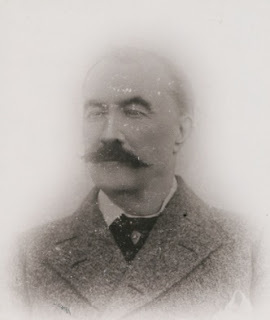
Joseph Stear Carlyon Cole, 1895 [SLSA B 12272]
Joseph Stear Carlyon Cole was born in Exeter, Devon, Englandin 1832.He emigrated to Penwortham, South Australia in 1857. He taught at the AuburnPublic School and worked as a clerk at the local district court; was secretaryfor the Independent Order of Oddfellows; was a correspondent for the SouthAustralian Register newspaper; and curator for a local cemetery.
In 1861, Cole was headmaster at thePulteney Street School in Adelaide. He left to open his own school atWatervale.
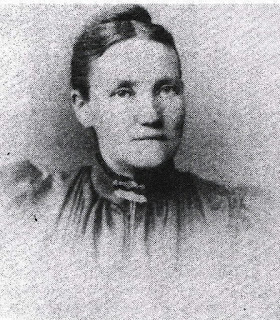 Hannah Cole nee Peacock
Hannah Cole nee PeacockCole married Hannah Peacock in Adelaide, in November 1862.Together they had five daughters and one son; Florence (1863-1936), Ada (1865 –1890), Jessie (1867 – 1949), Alice (1868 – 1934), Clement, (1871-1931), Mable (1865-1905).Joseph Coles retired in 1904 but remained on the property until his death on 15October 1916 at the age of 85. He was buried at St Mark’s Cemetery, Penwortham.Hannah died in August 1928.Hannah was buried with Joseph, and their son, Clement, was later buried with hisparents. Jessie and Alice Cole are buried together at Penwortham Cemetery.
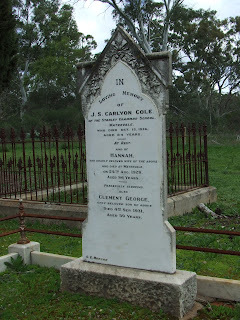
Next week: The Ghosts of Stanley Grammar School – Part 3: Peppithe Ghost.
Researched and written by Allen Tiller © 2024.
JeanV. Moyle, 'Cole, Joseph Stear Carlyon (1832–1916)', AustralianDictionary of Biography, National Centre of Biography, ANU, (1981).
Ibid.
'FamilyNotices', The Register, (17 October 1916), p. 2.
'MRS.COLE.', Chronicle, (8 September 1928), p. 22.
October 15, 2024
The Ghosts of Stanley Grammar School – Part 1: History
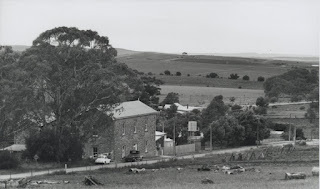
Old Stanley Grammar School, Watervale c. 1975 [SLSA: B 31688]
The construction of the Stanley Grammar School began in1863. The school was built by its founder, Joseph Cole. Cole founded his schoolin 1858, teaching from the Watervale Bible Christian Chapel. A new publicschool opened in Watervale in 1859 that Cole also taught at.
Cole purchased land between the school and Commercial Street on which he builta four-room private school building. In 1867, the school officially adoptedStanley Grammar School as its name. The school operated as a boarding house forboys, who were schooled there, with girls allowed access to schooling duringthe day. The school had a 30-acre recreation area that featured a gymnasium.
In 1871, the school was extended, with asecond story, new ground floor rooms and further dormitories. Lessons taughtincluded practical mathematics, Logarithms, chemistry, assaying, surveying,linear and perspective drawing, brokerage, bookkeeping, typewriting, drawingtheodolite and chain surveying, music, and field subjects.
Miss Susan Roach was the assistant teacher of Mr Cole. Inevery room was a list of rules and regulations of the school, which were sacrosanct,and woe to those who disobeyed. Coles taught his students to read parliamentarynewspapers so that they could be informed about politics when it became their timeto vote. He also encouraged his students to uphold moral standards when studentswent home to their own districts; that a man would be judged by their actions,conduct and manner.Many of his students went on to be important people in South Australia,including; Sir David Gordon, Dr William Torr, Sir John Duncan, Sir FrederickYoung, H C Mengeson, J Harmer, Dr W Jethro Brown and Emile Sobels.
Mr A.H. Wehrmannrecalled in The Recorder newspaper in 1949, that two school mottos were hung inthe classroom. The first, ‘Let the boy learn so he may be able to teach,’ and thesecond, ‘Learning is wealth to the poor and an ornament to the rich.’
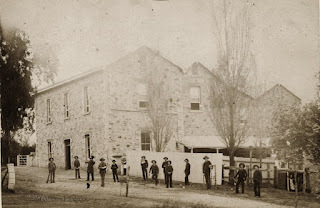
Stanley Grammar School 1880 [SLSA: B 12274]
The building lay empty for 30 years, Cole’s daughter, Jessie,lived in the family house built next door until her death in 1949. After herpassing the family belongings and property were sold at auction.
the building has been utilised by the Girl Guides, by artists, by numerousowners who wanted to restore it, but it fell into disrepair. One potentialbuyer wanted to demolish it and use the stone in other projects. In the 1980s,it was The Three Roses Restaurant. The building was sold to Adelaideheart surgeon, Dr John Knight, who restored it to its former beauty. The propertywas sold to Denise and Frank Kluss in 2007, who now offer the site as a deluxe boutiqueaccommodation.
Next week: The Ghosts of Stanley Grammar School – Part 2: FamilyHistory
Researched and written by Allen Tiller © 2024.
'OldStanley Grammar School at Watervale', Northern Argus, (28 April1949), p. 1.
'EarlyTeaching In Watervale', Chronicle, (29 April 1948), p. 32.
Lantana,‘History,’ Stanley Grammar Country House, (2023), https://www.oldstanleygrammar.com.au/....
'MR.OSBORNE'S MEMORIES', Recorder, (10 October 1949), p. 3.
'OldStanley Grammar School at Watervale', Northern Argus, (28 April1949), p. 1.
September 3, 2024
The Bent Tree Haunting - Watervale

On the HorrocksHighway, between Leasingham and Watervale there once stood a landmark, a benttree, which marks the spot of a tragic accident.
Andrew Sands came to Australia on board the passengership Epaminondas, arriving at Port Adelaide on 2nd August 1852.Andrew was a 30-year-old Scottish-born Miner, his wife, Margaret was 28, theyhad (at the time) three children, David, aged 8, James, aged 4; and 1-year-old Margaret.The couple had one South Australian-born child, Archibald in March 1866.
On Tuesday 2ndFebruary 1869, Andrew Sands was thrown from his horse during a thunderstorm, nearthe Bent Tree, a local landmark at the time. Sands was found and taken to theAuburn Hotel, where he was attended by Doctor Wall. He was diagnosed with asevere concussion of the brain.
On 4 February 1869, Andrew Sands died. Sandshad a fractured skull, and his brain had swelled, eventually killing him. Hewas buried the following day 5th of February 1869, in the AuburnCemetery, overseen by Reverend Crawford.
Since his untimelydeath, a local legend states that on moonlit nights, the exact spot where he came offhis horse, the ghost of Andrew Sands appears. Before the time of motor cars, it was claimedthat Sand's ghost would try and stop passersby. He walks with his arms out,pleading for a lift. Horses would rear up at the sight of the ghost, bolting,and often throwing their rider to the ground, just as Sands horse had done manyyears before.
Sand's ghost is not seen as much these days. As cars speed byon the Horrocks Highway, but every now and then, a report of an oddly dressedman, arms outstretched, as if pleading, begging for someone to stop and savehim, is seen…
Researched and written by Allen Tiller © 2024Robert Janmaat, ‘Epaminondas’, The ShipsList, SA Passenger Lists, 1847-1886, (2008), https://www.theshipslist.com/ships/au....
'AUBURN.', KapundaHerald and Northern Intelligencer, (5 February 1869), p. 3.
August 6, 2024
A Ghost Named Clark.
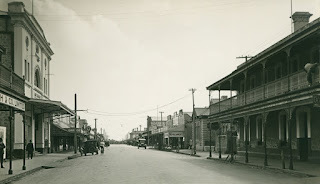 Kadina 1933 {SLSA B 8738}
Kadina 1933 {SLSA B 8738}
In August 1880,Kadina on the Yorke Peninsula was haunted by a ghost. The ghost was seen in theevenings. It purposefully scared women and children, jumping out from behindtrees, and around corners.
One evening, FootConstable Murray of the Kadina police was patrolling the streets at night. Hespotted the ghost as it floated through the town and followed it. He came up tothe ghost, and grabbed it, expecting to pass through it - as you do – but theghost was solid. He unmasked the Kadina spectre, a man in a white bedsheet, andtook him to the police station! FC Murray may have been South Australia’s first‘ghostbuster!’
Hosiah Clark was charged by Foot Constable Murray with‘unlawful use of a disguise to frighten women and children.’Clark was deemed idle and disorderly, he was sentenced to pay 15s for hiscrime, and serve fourteen days in the Wallaroo Gaol.
'POLICECOURT—KADINA.', The Wallaroo Times and Mining Journal, (18 August1880), p. 3.
'NEWS OF THEMONTH.', The Illustrated Adelaide News, (1 September 1880), p. 1.
July 2, 2024
Port River Sunfish
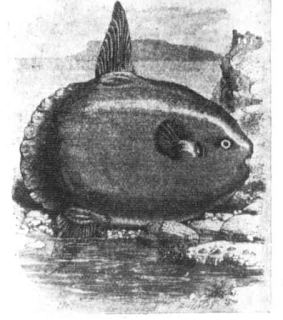
In 1903, the Adelaide Observer reported thatMr Seymour Bagot and a small party of young men were fishing in the Port River.(The Observer, in 1908, reported the incident happened at Schnapper Point).Bagot noticed a fish floating lazily on the surface of the water with a finprotruding, he described it as looking ‘like a shark.’
Bagot reported the incident to the journalist stating,
‘I pickedup my gun and fired at it twice in quick succession. It immediately dived, andI headed the launch for the shore. For a time, I lost sight of the queer fish,but it found us shortly afterwards and nearly capsized the boat. Our propellorstruck it once of twice; and then I shot again, and this time managed to hit itin a vital part. The chase and kill were more exciting than any shark couldpossibly have given.’
The fish was 7 feet 2 inches (2.1 meters) inlength; 9 feet 2 inches (2.8 meters) in girth, and length round, 18 feet (5.4meters). Each of its two fins measured 3feet 1 inch (0.94 meters). The distance from the top fin to the bottom was 9feet 6 inches (2.92 meters). The fish weighed 15 cwt (762 kg).
The fish anOcean Sunfish (also known as a Mola mola) can weigh between 250 to 2000Kg. Theycan grow to at least 3.3 meters and as large as 4 meters in size. According tothe Australian museum, there are five species of Sunfish found in Australianwaters; the Hoodwinker Sunfish - Mola tecta, the Giant Sunfish- Mola alexandrini, the Ocean Sunfish - Mola mola, SlenderSunfish - Ranzania laevis, and the Point-tailed Sunfish, Masturuslanceolatus.
The fishwas donated to the South Australian Museum. The Register newspaper reported inDecember 1903 that,
‘Very shortly the enormous sunfish captured inthe Port River by Mr. Seymour Bagot, will be added to the collection. Thisexample and a mute swan (one of a number given to the Botanical Gardens by thelate Queen Victoria) are now receiving the finishing touches.’
The sunfish caught be Seymour Bagot was on display in the South Australian for many years. Although it doesn’t mention Bagot’s Sunfish, this article, written by Dan Monceaux for the Marine Life Society of South Australia Inc., records modern captures of the Sun fish in South Australia: http://mlssa.org.au/2014/08/09/sunfis...
Researched and written by Allen Tiller © 2024
[1] 'GENERAL NEWS.', Observer, (26 September 1908), p. 35.
[2] 'A SEA MONSTER.', Adelaide Observer, (18 July 1903), p. 24.
[3] 'A SEA MONSTER.', The Capricornian, (25 July 1903), p. 46.
[4] Kerryn Parkinson, Ocean Sunfish, Mola mola (Linnaeus, 1758), Australian Museum, (2021), https://australian.museum/learn/anima....
[5] 'ADDITIONS TO THE MUSEUM.', The Register, (22 December 1903), p. 4.
June 25, 2024
Gawler National Trust Heritage Museum
Gawler National Trust Heritage Museum
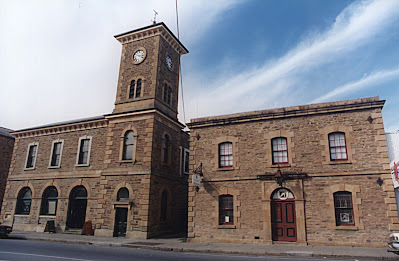
In the past year, I have held 3 presentations at the GawlerHeritage Museum, raising close to $2000 for the museum. Many people still don’tseem to know Gawler has a museum in Murray Street, so I thought I mightshare a ghost story to see if it generates some interest and gets some peoplevisiting…
This building started as Gawler’s Telegraph Station andwas built in 1860. Pre-internet and telephones, A wire signal was installedthat allowed a tapped, morse code message to be sent to Gawler from Adelaide orPort Adelaide when the mail arrived.
Eventually, the Post office moved next door and this building became the GawlerSchool of Mines and the Gawler Adult Education Centre. From 1915until 1953 it was the Commonwealth Government Electoral Office. In 1966, thebuilding was transferred to the National Trust. It is now Gawler’s NationalTrust Museum.
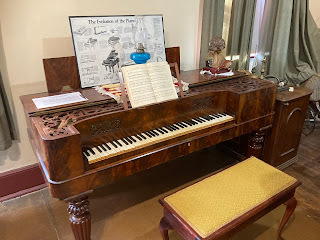
The building is allegedly haunted by twin girls who sit onchairs on
the upper level. A witness claimed to have walked into the room and saw thelittle girls sitting there,
talking to each other. They did not seem to notice the living lady, andvanished before her eyes, as she
stared at them in shock!
Another ghostly occurrence is linked to the old pianoupstairs, during a paranormal investigation, the piano was heard to tap out afew notes – perhaps this was a ghost playing a tune…or typing our morse code…
June 4, 2024
Cold Case: Darren Jason Shannon
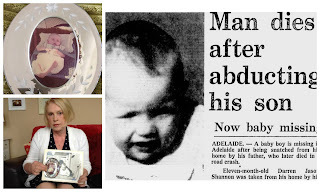
On Saturday 9 June 1973, 11-month-old Darren Jason Shannonwas abducted by his father. Darren, known as Jason by his mother, was at his grandparents’house at Blackdown Road Elizabeth West (now Davoren Park) when his father John ‘Barry’Shannon, a man with a long history of mental illness abducted him. 24 hourslater, John Shannon died in a head-on car crash near Roseworthy. Jason was notfound in the car, or nearby, and his whereabouts to this day, remain a mystery.
Jason’s mother, Michelle, recollected in the Sunday Mail, in 2016 the day of her son's abduction. She recalled that Barry had come to thehouse twice that day, which was unusual, but other than that, there was nothingout of the ordinary, not suspicious about his behaviour.
The couple had split up, and Michellehad moved back to her parents’ home. She had received custody of Jason, but Barryhad received visitation rights.
On the evening of the abduction, Barry came to the house. Hesnatched Jason from the loungeroom, and Michelle's dad, Alfred chased after him.Barry was too quick, escaping into his car and speeding off. The familyeventually left Adelaide and returned to England.
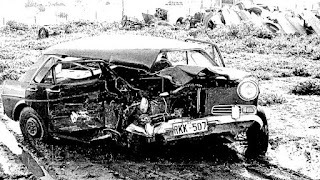 Jason Shannon Cold Case - Car Crash Scene (Wolseley 1300 Mk II)
Jason Shannon Cold Case - Car Crash Scene (Wolseley 1300 Mk II)
Police investigations concluded that Barry could not havedriven far in the two hours between the abduction and car crash. They estimatedthe farthest he could have travelled was Clare or Port Wakefield fromElizabeth, then back through Roseworthy. They also concluded from examining soil samplesin his car and shoes that Barry had not walked in dirt or mud, or beeninvolved in digging. The soil samples confirmed the dirt from his parents’ and former in-law’s homes but nowhere else.
A grave was interferedwith in 2005 at Church of Christ cemetery Kapunda – but no conclusive connectionbetween the two cases has been established. Police believe that Barry either disposed of his son’s bodysomewhere before the crash or gave him to someone else to raise in secret.
Anyone with information that could assist policeinvestigating the disappearance of baby Jason is asked to call Crime Stopperson 1800 333 000 or report online at https://crimestopperssa.com.au/ - callers can remain anonymous.
Debbie Schipp, ‘Cold case: Four decades on, what happened to baby Jason?’, TheAdvertiser, (August 2016), https://www.news.com.au/national/crim....
Nigel Hunt, ‘Police reveal secondtheory in unsolved 1973 baby abduction case,’ Sunday Mail, (31 July 2016).
Nigel Hunt, ‘Police reveal second theory inunsolved 1973 baby abduction case,’ Sunday Mail, (31 July 2016).
CaseProfile – Darren ‘Jason’ Shannon, Crime Stoppers, (10 June 2022), https://crimestopperssa.com.au/media-...



